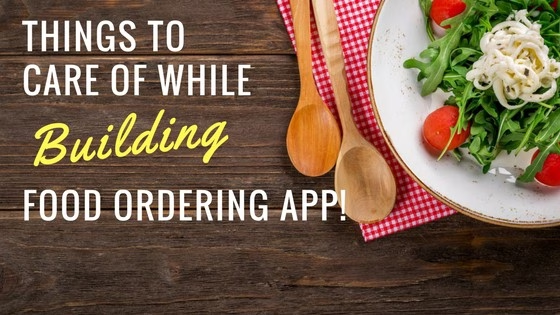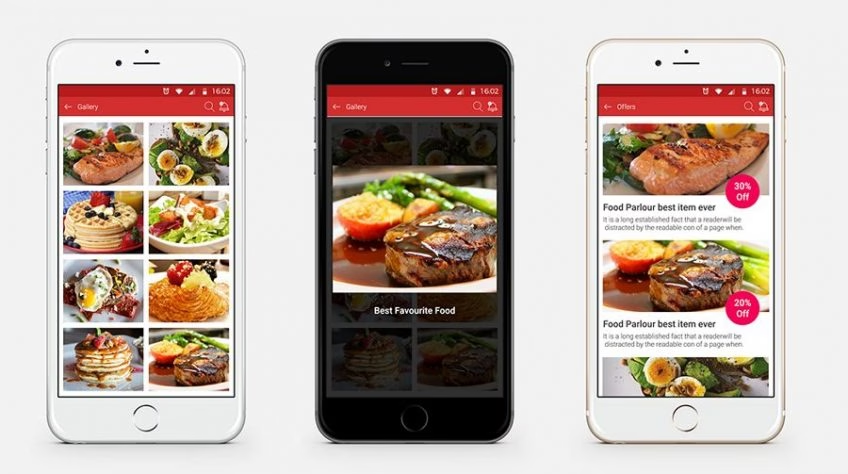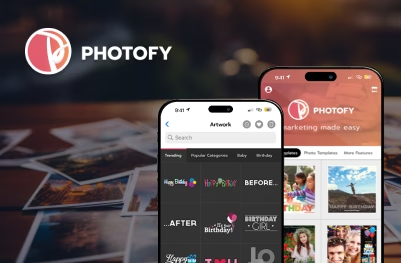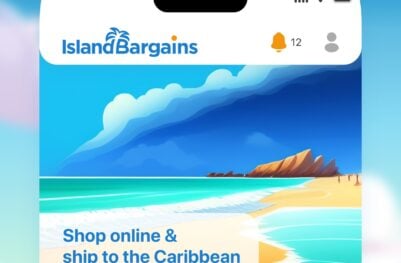- Developers
- Developer Blog
- Web and Mobile Development
- How to Create a Food Ordering App

profile

By Aran Davies
Verified Expert
9 years of experience
Aran Davies is a full-stack software development engineer and tech writer with experience in Web and Mobile technologies. He is a tech nomad and has seen it all.
Interested in knowing how to create a food ordering app for a restaurant business? This article offers a step-by-step guide for building such an app.
In this article
- Examples of Popular Food Ordering Apps
- Food Ordering App Features
- How to Build a Food Ordering App
- Frequently Asked Questions on How to Create a Food Ordering App
According to Forbes, “Online food companies are finding that customers are ravenous for their services. Online food delivery service is set to supersize to a hefty $200 billion by 2025”.
It is clear that there is still lots of room for growth in this industry for those companies willing to innovate. Let’s see how you can be one of them by developing an innovative mobile application for a food delivery business.
First, we will look at some popular online food ordering apps to get an idea of what is selling in the food delivery startup market.
Examples of Popular Food Ordering Apps
Let’s review a few popular food ordering apps, which are as follows:
Seamless
It’s part of Grubhub, which itself is another popular food ordering app. The following relevant facts about Seamless are worth noting:
- At the time of writing, it serves 600 US cities.
- They have a web app, an Android app, and an iOS app.
- The app lists thousands of restaurants.
- It’s easy to use. Customers can order food with just a few clicks and taps.
- The app is free to use, moreover, they have discount offers.
Uber Eats
Uber Eats is part of Uber, the famous cab-hailing company. A few quick facts about Uber Eats are as follows:
- It serves several large US megacities like Chicago and Los Angeles.
- The app is also available in several other megacities in the world, like Amsterdam, Tokyo, and Singapore.
- Uber Eats uses quite a few features of Uber, e.g., it shows estimated delivery time, and offers cashless transactions.
- They have Android and iOS apps.
- There is a delivery fee.
DoorDash
DoorDash serves several megacities in the US like New York, Chicago, Boston, Atlanta, Seattle, etc. Here are a few relevant facts about DoorDash:
- They have Android and iOS apps.
- The company has an interesting feature called the “DoorDash Delight” scoring system. It covers several indicators like food quality, restaurant popularity, delivery time, and customer satisfaction.
- There is a fee, and it varies by restaurant.
Food Ordering App Features

A food ordering app should offer the following features:

Get a complimentary discovery call and a free ballpark estimate for your project
Trusted by 100x of startups and companies like
- The app should feature a comprehensive list of restaurants in the cities it serves. People have different tastes, therefore, the list should cover different types of restaurants.
- Healthy food is increasingly popular, therefore, the food app should feature restaurants that serve them.
- Customers should have an easy-to-use, yet attractive “User Interface” (UI).
- Search and filtering options are important.
- The food delivery application should show a detailed menu and price list.
- Customers should be able to see the estimated delivery time.
- Order confirmation, order delivery, etc. are key events. Customers should get SMS for these events. Push notifications are important.
- The app should show discounts and offers.
- Cashless modes of transactions including card payment are important in such apps.
- Customers should be able to rate restaurants and delivery.
- The company should offer an Android app, an iOS app, and a web app.
Read about these examples of food delivery apps to know more about these desired features.
How to Build a Food Ordering App
Let’s dive deep and see how to create a food ordering app:
1. Prepare the project scope statement
While the location, participating restaurants, etc. are the concerns of the business stakeholders, you need a project scope statement for the app development part. As part of the project scope, I recommend you build the following:
- A web app;
- An Android app;
- An iOS app.
The apps should have the features I have described above.
2. Use the Agile methodology to create a food delivery app
While the above scope is good for the initial launch of your app, you might need to add more features in the future. That calls for iterative development, therefore, the use of the Agile methodology.
To know why the Agile SDLC model helps in iterative development, read “What is software development life cycle and what you plan for?”.
3. Organize your development team to create a food ordering app
Organize a team with the following roles:
- Business analysts (BAs);
- UI/UX designers;
- Web developers with Node.js skills;
- Mobile developers:
- Android developers with experience in Kotlin;
- iOS developers with expertise in Swift;
- Testers;
- A project manager (PM).
You should use the “Scrum” technique to manage this Agile project. The PM should perform the role of a “Scrum master”, and he/she should form small cross-functional teams. These are called “Scrum teams”.
Read more about Scrum in “How to build a Scrum development team?”.
4. Prepare for future internationalization
You might launch your app in one geography now. However, it pays to design and develop in a manner that makes future launches in other geographies easy. You should follow “app internationalization” guidelines, e.g.:
- Code in a manner that the programs can pick content from different files based on geographic region.
- Keep content separate from the code.
- Design UI in a way that it can easily support the launch in other geographies.
Read more in “The ultimate guide to mobile app internationalization”.
5. Use a modern PM tool
A scrum team works as follows:
- A “Product owner” provides the features in a document called “Product Backlog”.
- The team estimates the features, prioritizes them, and plans “Sprints”, i.e., iterations.
- Project status tracking happens via a “Daily stand-up meeting”.
- Sprint approval happens in a meeting called “Sprint review meeting”, provided features are working.
- There is a lessons-learned exercise called “Sprint retrospective meeting”.
Careful management of these tasks requires a robust PM tool. I recommend you use Jira.
6. Sign-up with a managed cloud service provider
You should focus on the design and development, and let a managed cloud service provider handle the web app platform and mobile backend. The web app needs a “Platform as a Service” (PaaS) provider, whereas the mobile app needs a “Mobile Backend as a Service” (MBaaS) provider.
I recommend you sign-up with AWS. They have impressive cloud capabilities, and you need only one AWS account.
AWS Elastic Beanstalk is their PaaS offering, providing you with the following advantages:
- It handles the cloud infrastructure, networking, storage, middleware, operating system, and runtime environment.
- AWS Elastic Beanstalk lets you add databases, security, DevOps, and 3rd party APIs into your app.
- They have impressive application monitoring and auto-scaling solutions.
The AWS MBaaS offering is AWS Amplify, and you can get the following advantages:
Hire expert developers for your next project
1,200 top developers
us since 2016
- Amplify addresses the cloud infrastructure, persistent storage, database, etc.
- You can easily incorporate user management, security, push notification, and other key features.
- 3rd-party API integration, scaling your app, handling the complexity arising from different mobile platforms, etc. are easy with AWS Amplify.
7. Prepare to use the Android device location feature
A food delivery app needs to use the device location. You need to use the Android framework location APIs, as follows:
- This uses the “Android.location” package.
- Your app can get the last known location, receive location updates, display a location address, etc. using this framework.
8. Get the iOS device location framework
You need to use the “Core Location” framework to implement the device location feature in the iOS app. Note the following relevant points:
- This framework makes use of WiFi, GPS, Bluetooth, and other relevant hardware features to gather the location data.
- You can use the iOS SDK that comes as part of this framework.
- There is detailed documentation concerning this framework. It guides you in implementing various features like choosing the authorization level, getting the users’ location, region monitoring, geocoding, error-handling, etc.
9. Obtain a delivery logistics platform SDK/API
Food delivery is a key functionality of your app, and I recommend you use Bringg, a delivery logistics technology platform to implement this. They already have a cloud-based restaurant delivery software platform. You can get the following advantages:
- Shorter time-to-delivery;
- Cost reduction;
- Flexible utilization of multiple fleet types;
- Optimal route assignments and allocations;
- Higher customer satisfaction.
You can review the following resources to implement their SDKs:
- Bringg developer portal documentation;
- Customer SDK for Android;
- Driver SDK for Android;
- Customer SDK for iOS;
- Driver SDK for iOS;
- Bringg JavaScript SDK for the web app.
10. Sign-up for a payment gateway SDK/API
A food delivery app needs a robust payment gateway integration. I recommend you sign-up with Braintree. It’s from PayPal.
Braintree offers the following advantages:
- Fraud protection;
- Reporting;
- Data security;
- Global scalability;
- You can implement various payment methods like a card, PayPal, Venmo (in the US), etc.
You can go through their detailed developer portal documentation. It covers the following:
- Using their Android SDK;
- How to use their iOS SDK;
- Integrating with the JavaScript SDK;
- Integration guide;
- Tutorial.
11. Get the required Android push notification software
You will need to implement push notifications in your Android app. I recommend you use “Firebase Cloud Messaging” (FCM) for this. Note the following relevant information about FCM:
- It’s a cross-platform messaging solution for delivering messages.
- FCM enables you to notify the client app that new information is available to sync.
- Learn how to use it in your Android app, in “Set up a Firebase Cloud Messaging client app on Android”.
- Read “Add Firebase to your Android project” for more details.
You also need to use the Firebase Admin SDK. Read “Firebase admin SDK for FCM” for guidance.
12. Learn how to set up push notifications in the iOS app
Use “Apple Push Notification service” (APNs) in the iOS app. Read the following key documentation to implement it:
- “APNs overview” for an overview of APNs.
- Design guidelines to implement APNs.
- Developer guidelines for working with APNs.
13. Sign-up for an SMS management solution
You need a robust SMS management solution for the food ordering app. Twilio provides robust communication APIs for SMS, and I recommend you use it. I suggest you go through the following information:
- “Messaging services and Copilot”, to understand how to implement the “Programmable SMS” solution from Twilio.
- Twilio SDKs library, where you can get guidance for using their Android, iOS, and JavaScript SDKs.
14. Develop, test, and deploy the food ordering web app
Now that you have obtained the required managed cloud services and SDKs/APIs, you can proceed with the web app, as follows:
- Use Node.js, a popular runtime environment enabling a developer to code performant and scalable apps. Node.js is open-source, and a large developer community creates many useful tools and frameworks. JavaScript developers can experience high productivity with Node.js.
- Express is a highly popular framework based on Node.js, and a programmer can create fast apps with it. I suggest you use it in this project.
- Add a database to your app on AWS Elastic Beanstalk, by following these instructions.
- Integrate the Bringg JavaScript SDK, Braintree JavaScript SDK, and Twilio JavaScript SDK.
Read “Deploying Node.js applications to AWS Elastic Beanstalk” to know how to create, test, and deploy a Node.js web app on AWS Elastic Beanstalk. The guidance covers deploying an Express.js app.
15. Design the food ordering app UI
Design a user-friendly UI for the mobile app. Use the following guidelines:
- “Mobile navigation menu examples” for selecting an appropriate mobile navigation menu;
- “8 trends in mobile app color scheme” for choosing the right mobile app color scheme;
- “How to design the perfect icon for your mobile app?” to design great icons for the mobile app.
16. Code, test, and deploy the Android app
You should use Kotlin, the modern Android development language to code the Android app. Kotlin offers many advantages, which are as follows:
- The concise syntax of Kotlin helps in reducing the coding effort.
- Kotlin has a small library, therefore, the app is fast.
- The language helps to eliminate common errors like the null pointer exception.
- Android Studio, the popular IDE for Android development fully supports Kotlin.
- Kotlin supports functional programming, thus raising the productivity of developers.
Read “Kotlin vs Java: which is the best choice?” to know about the advantages of Kotlin.
Code, test, and deploy the app in app stores as follows:
Hire expert developers for your next project
- Use Android Studio. Read “Get started with Kotlin on Android” for guidance.
- Integrate Android framework location APIs, Bringg Android SDK, Braintree Android SDK, FCM, and Twilio programmable SMS Android SDK in the app.
- Test thoroughly.
Use this guide to publish the app in Google Play.
17. Develop, test, and deploy the iOS app
I recommend you use Swift to code the iOS app. It’s the modern programming language that Apple prefers. Swift has many advantages, as follows:
- Developers can write less code, yet accomplish their objectives with Swift.
- Swift helps programmers eliminate common coding errors.
- Apps coded with Swift are easier to maintain since the code has high readability.
- This lightweight language helps with the performance of the app.
Read “How to migrate your Objective-C project to Swift?” to understand the advantages of Swift.
Proceed with the iOS app development as follows:
- Use Xcode, the popular IDE from Apple. Xcode fully supports Swift.
- Integrate Apple’s “Core Location” framework, Bringg iOS SDK, Braintree iOS SDK, APNs, and Twilio iOS SDK with your app.
- Test your iOS app using Xcode.
Publish the app in “Apple App Store” following this guideline.
Congratulations! You have just completed the development of your food ordering app.
Planning to launch a food ordering app?
The market for ordering food online is growing steadily. A busy life and lack of time for cooking are some of the contributing factors. Many want to eat healthy food, however, they can’t devote enough time to this. As a result, they turn to food and drink apps.
The online food industry was said to see a CAGR of 10.06% between 2024 and 2028 with the revenue crossing $1.79 trillion by 2028. You can find more relevant statistics in this Statista report.
You can easily tap into the lucrative market by building a feature-rich online food ordering mobile app. However, developing a custom food delivery app to compete with Seamless or Uber Easts can be complex. You might need help from a software development company.
Read our guide “How to find the best software development company?” before you engage a development partner for your strategic project.
If you are still looking for experienced mobile app developers to partner for your food delivery app development project, DevTeam.Space can help you with its expert software developers community.
Leave your initial food delivery app development requirements via this form and one of our account managers will contact you for further discussion.
Frequently Asked Questions on How to Create a Food Ordering App
Food Panda and Uber Eats are two of the most popular and widely used food ordering apps.
You will need to create a project plan so that you can onboard the right developers and UI designers. Once you have done this, you will be able to set up the infrastructure and get the ball rolling.
DevTeam.Space is a community of field expert software developers. The platform has received rave reviews from its clients due to its high standards of excellence.

Alexey Semeney
Founder of DevTeam.Space
Hire Alexey and His Team To Build a Great Product
Alexey is the founder of DevTeam.Space. He is award nominee among TOP 26 mentors of FI's 'Global Startup Mentor Awards'.
Alexey is Expert Startup Review Panel member and advices the oldest angel investment group in Silicon Valley on products investment deals.


